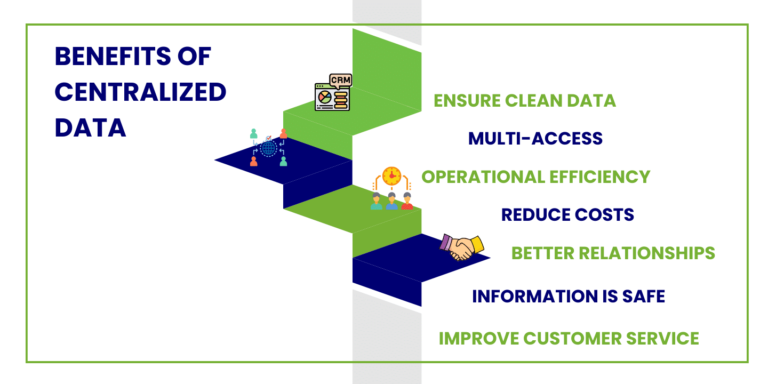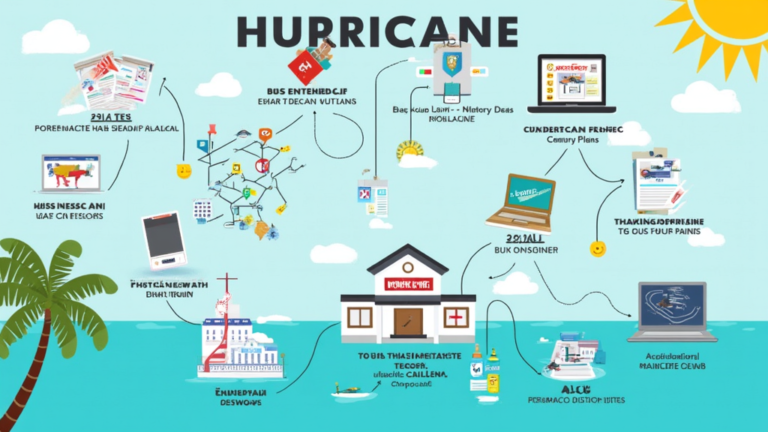Hailstorms: Understanding Their Impact and Predictions
Hailstorms are among the most destructive manifestations of severe weather, capable of causing significant hail damage to property and agriculture alike. These intense convective storms can unleash hailstones of various sizes, with some reaching the dimensions of baseballs, as witnessed during the recent catastrophic events in Colorado and Texas. The financial impact is staggering, leading to insurance losses that can soar into the billions, especially as urban areas expand into traditionally vulnerable zones. Despite their frequency, hailstorm prediction remains a challenge, leaving many unprepared for the sudden onslaught of these icy projectiles. Understanding the dynamics of these storms is crucial for homeowners and businesses alike, as they grapple with the repercussions of increasing severe weather events.
When we consider the impact of ice storms, particularly those characterized by hail, it becomes evident that these weather phenomena are a serious concern for many communities. Often categorized under convective weather systems, these icy events can result in substantial damage to infrastructure and crops, leading to significant economic repercussions. The unpredictability of these storms makes it vital for residents to stay informed about potential hail events, as the consequences can be dire. As we explore the various aspects of hailstorms, including their frequency and the subsequent insurance claims, it is essential to recognize the broader implications of these weather patterns on our society and economy.
Understanding Hailstorms: Nature’s Destructive Force
Hailstorms are one of the most violent manifestations of severe weather, capable of causing significant destruction across vast areas. Characterized by their formation within strong convective storms, these weather events can produce hailstones of various sizes, from small pellets to baseball-sized projectiles. These storms not only pose immediate risks to vehicles and buildings but also have a substantial impact on the economy, particularly through insurance claims and property damage. As noted in recent events in Colorado and Texas, hailstorms have resulted in billions of dollars in damages, highlighting the urgent need for increased public awareness and preparedness.
The unpredictability of hailstorm occurrences further complicates the situation. While meteorologists have improved their ability to forecast severe weather events, hailstorms remain notoriously difficult to predict accurately. This unpredictability can lead to insufficient preparation and significant insurance losses, as many affected individuals and businesses are caught off guard. As severe weather events become more frequent due to climate change, understanding the dynamics of hailstorms is essential for mitigating their impact and enhancing community resilience.
The Economic Impact of Hail Damage
Hail damage results in substantial economic repercussions, particularly for homeowners and businesses. The costs associated with repairing roofs, vehicles, and other damaged property can be overwhelming, often leading to increased insurance premiums and financial strain. In 2023 alone, U.S. insured losses due to severe convective storms, including hail, exceeded $50 billion, marking a historic high. This increase is not just a reflection of more frequent storms but also of rising property values and urbanization, as more people settle in areas vulnerable to such weather phenomena.
Moreover, the agricultural sector faces significant threats from hailstorms. Crop damage can decimate yields, affecting food supply chains and driving up prices for consumers. The economic impact of hailstorms extends beyond immediate repair costs, influencing local economies and potentially leading to long-term financial instability for affected communities. As the frequency and severity of hailstorms continue to rise, it is crucial for stakeholders, including policymakers and insurance companies, to develop strategies that address these growing economic challenges.
Hailstorm Prediction: The Future of Weather Forecasting
Advancements in technology and research are paving the way for improved hailstorm prediction. Initiatives like the In-situ Collaborative Experiment for the Collection of Hail in the Plains (ICECHIP) aim to gather detailed data on hailstorms, enhancing the accuracy of forecasting models. By better understanding the conditions that lead to hail formation, meteorologists can provide more timely warnings, allowing residents and businesses to take protective measures before a storm strikes. This proactive approach is essential for reducing the risk of damage and ensuring public safety.
In addition to field studies, the establishment of the Center for Interdisciplinary Research on Convective Storms (CIRCS) signifies a collaborative effort to enhance hailstorm research. By involving various stakeholders, including the insurance industry, CIRCS aims to develop innovative solutions to mitigate risks associated with severe weather. As the understanding of hailstorm dynamics improves, the potential for more effective prediction and risk management strategies will become a reality, ultimately benefiting communities at risk.
The Role of Climate Change in Hailstorm Frequency
Climate change is significantly influencing weather patterns, including the frequency and intensity of hailstorms. While some studies suggest that overall hailstorm occurrences may decrease with rising temperatures, the size of hailstones is expected to increase. Stronger updrafts in warmer conditions enable larger hailstones to form, leading to more severe damage when these storms occur. As climate change continues to alter the landscape of severe weather, understanding its impact on hailstorm dynamics is crucial for future planning and preparedness.
The interplay between climate change and hailstorms also presents challenges for insurance companies. As larger hailstones become more prevalent, the potential for increased insurance claims rises, prompting insurers to reevaluate their risk assessments and premium rates. This evolving landscape necessitates ongoing research and adaptation strategies to ensure that communities can effectively respond to the changing nature of severe weather events.
Hailstorm Preparedness: Protecting Homes and Businesses
Preparedness is key to minimizing the impact of hailstorms on homes and businesses. Property owners should invest in protective measures, such as hail-resistant roofing materials and window coverings, to shield against hail damage. Additionally, having an emergency plan in place can help families and businesses respond swiftly in the event of a storm. This includes staying informed through weather alerts and local forecasts, which can provide crucial information about impending hailstorms.
Community resilience also plays a vital role in hailstorm preparedness. Local governments can implement initiatives aimed at educating residents about the risks of hailstorms and the steps they can take to protect their properties. By fostering a culture of preparedness, communities can work together to mitigate the effects of severe weather, ensuring that they are better equipped to handle the challenges posed by hailstorms and other natural disasters.
The Future of Insurance in the Age of Hailstorms
As the frequency and severity of hailstorms increase, the insurance industry must adapt to these changing dynamics. The rising costs associated with hail damage necessitate a reevaluation of coverage options and premium structures. Insurers are under pressure to provide adequate protection while managing their own risk exposure. This has led to a surge in innovation within the industry, with some companies exploring new technologies and data analytics to enhance their underwriting processes.
Moreover, collaboration between insurers and researchers is becoming increasingly important. By sharing insights and data regarding hailstorm patterns, the insurance industry can better prepare for potential losses and develop tailored coverage solutions. As initiatives like CIRCS gain traction, the potential for improved understanding of hailstorm risks will ultimately benefit both insurers and policyholders, fostering a more resilient approach to managing severe weather-related challenges.
Understanding Severe Weather and Hailstorms
Severe weather encompasses a range of atmospheric phenomena, with hailstorms being one of the most impactful types. These storms often occur alongside thunderstorms and can lead to devastating consequences for property and agriculture. Understanding the broader context of severe weather is crucial for recognizing the patterns that lead to hail formation, allowing for better preparedness and response strategies. With hail accounting for a significant portion of severe convective storm claims, it is essential to consider the interconnectedness of these weather events.
Meteorologists classify severe weather events based on their potential for causing damage, and hailstorms consistently rank high on this scale. The increasing occurrence of severe weather patterns, influenced by climate change and urbanization, emphasizes the need for ongoing research and community awareness. By educating the public on the risks associated with severe weather, including hailstorms, communities can take proactive steps to protect themselves and mitigate potential damages.
Insurance Losses and Hailstorm Trends
Insurance losses linked to hailstorms have seen a dramatic increase in recent years. As severe convective storms become more frequent, insurers are reporting higher claims volumes and payouts related to hail damage. This trend necessitates a comprehensive understanding of the factors driving these losses, including urban development, inflation, and the changing climate. By analyzing these trends, the insurance industry can better prepare for future events and adjust their models to reflect the realities of increased hailstorm risk.
Furthermore, the economic implications of rising insurance losses extend beyond the insurance sector. Communities affected by hailstorms often experience economic downturns, as businesses struggle to recover from damage. This highlights the importance of proactive risk management and community preparedness initiatives, which can help mitigate the economic fallout of severe weather events. By addressing the root causes of increasing hailstorm-related losses, stakeholders can work towards building more resilient communities.
Research Initiatives for Hailstorm Mitigation
Ongoing research initiatives focused on hailstorm mitigation are essential for advancing our understanding of these severe weather events. Projects like ICECHIP aim to gather critical data on hailstorm characteristics, improving forecasting models and risk assessment strategies. By investing in research, scientists can uncover new insights into the dynamics of hail formation and its impacts, ultimately leading to more effective predictive tools and community preparedness strategies.
Collaboration between researchers, meteorologists, and industry stakeholders is increasingly vital for addressing the challenges posed by hailstorms. By pooling resources and knowledge, these groups can develop innovative solutions that enhance resilience against hail damage. As research progresses, the potential for more accurate hailstorm prediction and effective mitigation strategies will empower communities to better protect themselves from the devastating effects of severe weather.
Frequently Asked Questions
What causes hailstorms and how do they relate to severe weather?
Hailstorms are caused by severe weather conditions, specifically through the development of strong updrafts within convective storms. These updrafts carry water droplets upward into extremely cold areas of the atmosphere where they freeze, forming hailstones. As these stones collide with supercooled water, they grow larger until they become too heavy to be supported by the updraft, ultimately falling to the ground. This process makes hailstorms a significant aspect of severe weather events.
How can I protect my property from hail damage during a hailstorm?
To protect your property from hail damage during a hailstorm, consider investing in impact-resistant roofing materials and ensuring your windows are reinforced. Additionally, moving vehicles into garages or covered areas can help prevent hail damage. Keeping trees trimmed away from structures can also mitigate the risk of damage from falling branches during severe weather.
What are the economic impacts of hailstorms on insurance losses?
Hailstorms can lead to significant economic impacts, particularly in terms of insurance losses. In 2023, insured losses from severe convective storms, including hailstorms, exceeded $50 billion in the U.S. This trend is driven by factors such as urbanization, increased property values, and the sheer volume of hail events. As hail becomes more frequent and severe, it continues to account for a substantial percentage of insured losses each year.
How are hailstorm predictions improving with recent research?
Recent research initiatives, such as the ICECHIP project, aim to improve hailstorm predictions by gathering detailed data on hail events in the Great Plains. This data will enhance forecasting models, allowing residents to better prepare for hailstorms and mitigate potential damage. Continued advancements in meteorological technology and collaboration among researchers and the insurance industry also contribute to improved prediction methods.
What role does climate change play in the frequency and severity of hailstorms?
Climate change impacts the frequency and severity of hailstorms by altering atmospheric conditions. While higher temperatures may lead to fewer hailstorms overall, they can result in larger hailstones due to stronger updrafts that allow hail to grow longer before falling. This dual effect poses challenges for forecasting and increases the potential for hail damage, necessitating ongoing research in hailstorm prediction and mitigation.
Why are hailstorms considered a major risk for solar energy projects?
Hailstorms pose a significant risk to solar energy projects due to their location in flat, open areas that are often prone to severe weather. For example, a hailstorm in 2019 caused $70 million in damages to a solar energy project in Texas. As the number of solar farms increases, understanding and mitigating the risks associated with hailstorms becomes crucial for protecting these valuable investments.
What is the relationship between hailstorms and convective storms?
Hailstorms are a subset of convective storms, which also include thunderstorms, tornadoes, and straight-line winds. Convective storms develop from rising warm, moist air that cools and condenses, often leading to severe weather phenomena. Hailstorms specifically occur when conditions allow for the formation of hailstones within these convective systems, making them a prominent concern in severe weather discussions.
How often do hailstorms occur in the United States?
Hailstorms occur frequently in the United States, with studies indicating that hail can be present on 200 out of 365 days in a year. The frequency of these storms varies by region, but they are particularly common in areas such as the Great Plains, where conditions are conducive to severe convective storm development.
| Key Point | Details |
|---|---|
| Recent Hailstorms | Baseball-sized hail in Denver caused billions in damages; melon-sized hail in Texas disrupted power. |
| Hailstorm Statistics | Hailstorms account for 80% of severe convective storm claims annually in the U.S. |
| Expert Insights | Dr. Victor Gensini emphasizes the frequency of hail and its economic impact, stating it causes significant insured losses. |
| Rising Losses | Insured losses from severe convective storms surpassed $50 billion in 2023, with hailstorms affecting 23 million homes. |
| Impact of Urbanization and Climate Change | Urbanization and climate change lead to increased hail losses; larger hailstones are expected due to climate trends. |
| Research Initiatives | ICECHIP project aims to improve hailstorm forecasting; CIRCS focuses on interdisciplinary research for better resilience. |
Summary
Hailstorms are becoming an increasing concern due to their destructive nature and rising economic impact. Recent events have highlighted the severity of hailstorms, with extensive damages reported in various regions, including Denver and Texas. With improved research initiatives on the horizon, there is hope for better forecasting and preparedness strategies that can mitigate the risks associated with these formidable weather phenomena.







